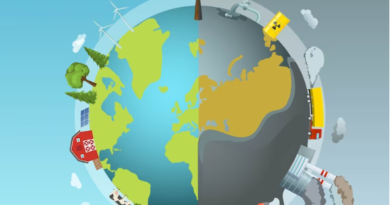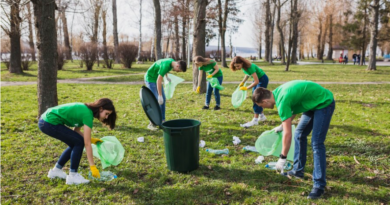Ways to Preserve the Environment 2024
Introduction:
In an age marked by unprecedented technological growth and industrial expansion, the urgent need to preserve our environment has become more glaring than ever before. As custodians of this planet, it is our collective responsibility to adopt sustainable practices that ensure the longevity of Earth’s precious natural resources. In this detailed exploration, we’ll delve into ten effective and comprehensive ways to preserve the environment, paving the way for a healthier, greener future.
Reduce, Reuse, Recycle: A Holistic Approach to Waste Management
At the core of any environmental preservation strategy lies the timeless mantra of “Reduce, Reuse, Recycle.” By consciously reducing our consumption, creatively reusing items, and actively participating in recycling programs, we can significantly diminish the burden on landfills and minimize the need for the extraction of new resources. Embracing this holistic approach fosters a mindset of sustainability and resource conservation.
Water Conservation: The Ripple Effect of Individual Habits
Water, a finite and essential resource, is often squandered through neglect and inefficiency. By adopting water-saving habits such as fixing leaks promptly, utilizing water-efficient appliances, and practicing mindful water consumption, we contribute to the preservation of this vital element. Conserving water is not only an individual responsibility but a collective effort with far-reaching impacts on ecosystems and communities.
Embracing Renewable Energy: A Shift Towards a Sustainable Future
The transition to renewable energy sources, including solar, wind, and hydroelectric power, represents a pivotal step in reducing our dependence on finite fossil fuels. Supporting and investing in clean energy initiatives accelerates the shift towards a more sustainable energy landscape, mitigating the environmental impact of traditional energy sources and fostering a greener, more resilient future.
Plant Trees and Nurture Green Spaces: Sowing the Seeds of Biodiversity
Trees serve as natural carbon sinks, absorbing carbon dioxide and releasing life-enabling oxygen. Engaging in tree-planting initiatives and actively preserving existing green spaces helps combat deforestation, fosters biodiversity, and contributes to the overall health of our ecosystems. The benefits of a green canopy extend beyond aesthetics, playing a critical role in climate regulation and environmental balance.
Sustainable Transportation: Reducing Carbon Footprints on the Move
Transportation is a significant contributor to carbon emissions, but sustainable alternatives abound. Opting for eco-friendly modes such as walking, cycling, or using electric vehicles can substantially reduce individual carbon footprints. Public transportation and carpooling represent collective efforts that further minimize environmental impact, promoting cleaner, more sustainable mobility solutions.
Supporting Eco-Friendly Products: Harnessing Consumer Influence
Consumers wield considerable power in shaping market trends. By making informed choices and supporting products with minimal environmental impact—such as those with eco-friendly labels, sustainable packaging, and materials made from recycled sources—we can influence manufacturers to adopt more environmentally conscious practices. This conscious consumption approach is pivotal in driving positive change within industries.
Educate and Advocate: Amplifying the Voice for Environmental Conservation
Raising awareness about environmental issues is paramount to building a sustainable future. Engaging in conversations, sharing information on social media, and actively supporting organizations dedicated to environmental conservation amplifies the collective voice advocating for change. This advocacy plays a pivotal role in influencing policies, promoting eco-friendly practices, and inspiring a wider community to prioritize environmental stewardship.
Conscious Energy Consumption: Efficiency at Home and Beyond
Efficient energy use is a cornerstone of environmental sustainability. By adopting energy-efficient appliances, turning off lights when not in use, and overall reducing unnecessary energy consumption, individuals contribute to the broader goal of energy conservation. These seemingly small actions, when practiced collectively, have a significant impact on reducing the strain on energy resources and mitigating environmental degradation.
Minimize Single-Use Plastics: A Pledge for Marine and Terrestrial Health
The pervasive issue of single-use plastics poses a severe threat to ecosystems and marine life. Taking steps to minimize the use of disposable plastics by adopting reusable alternatives—such as stainless steel water bottles, cloth bags, and containers—significantly reduces the environmental footprint associated with these pollutants. It is a pledge towards fostering a cleaner, healthier environment for current and future generations.
Participate in Community Cleanups: Fostering Local Environmental Guardianship
Participating in community cleanups is a tangible way to contribute to the preservation of local ecosystems. These events not only result in cleaner surroundings but also cultivate a sense of community and shared responsibility for the planet. The impact of such initiatives extends beyond immediate visual improvements, fostering a culture of environmental guardianship and collective pride in sustaining our shared habitat.
Conclusion: Preserving the environment is an intricate and multifaceted endeavor that demands commitment, education, and collective action. By incorporating these ten detailed and effective strategies into our daily lives, we lay the foundation for a sustainable and resilient future. Let us embark on this transformative journey of environmental stewardship, recognizing that our actions today shape the world of tomorrow. Together, we can foster a harmonious relationship between humanity and the planet, ensuring a legacy of ecological abundance for generations to come.
For More Articles visit : Home Page




